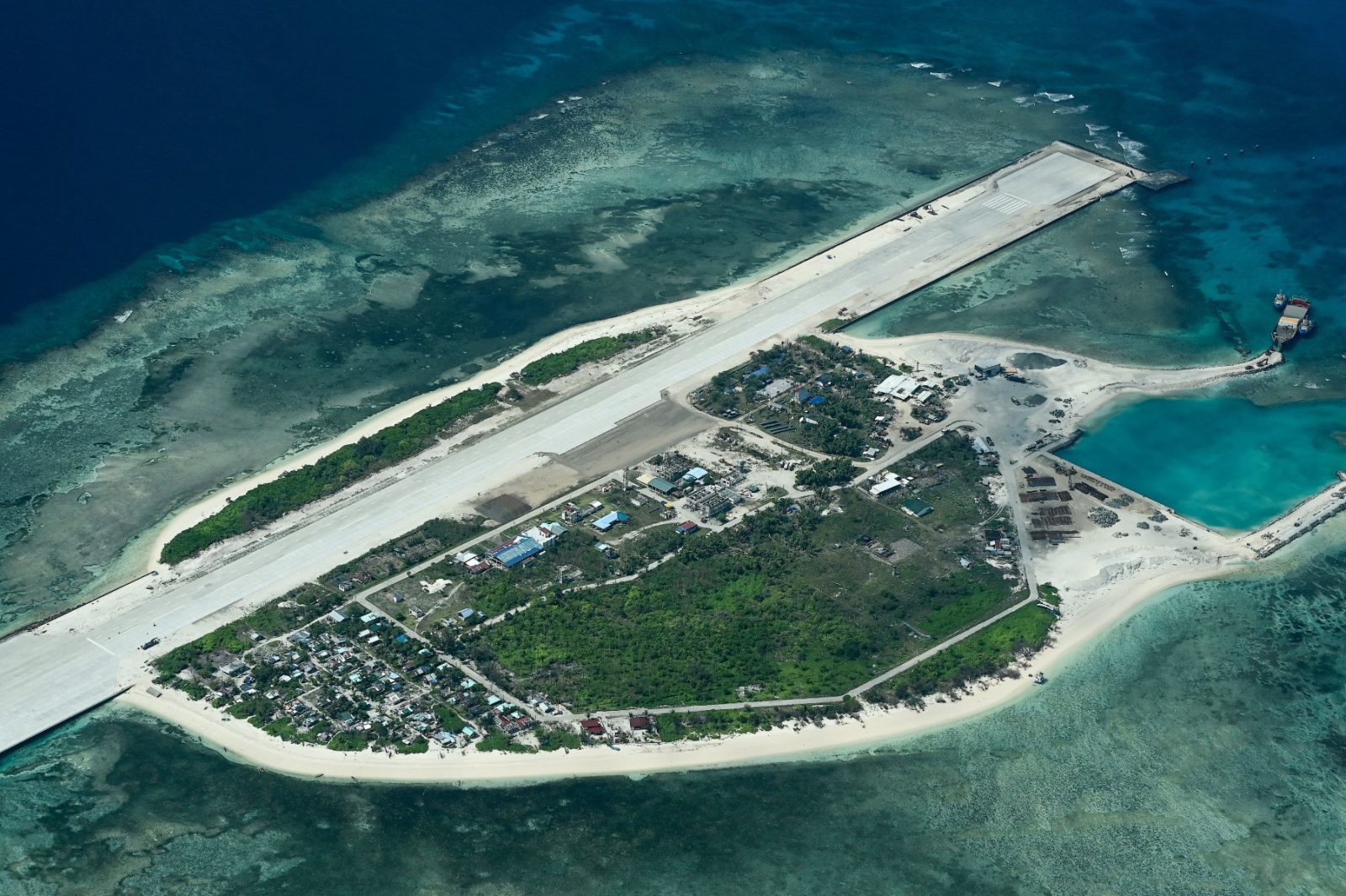As a Philippine Coast Guard plane carrying journalists flew over the Spratly Islands in the hotly disputed South China Sea, a Chinese voice issued a stern command over the radio: “Leave immediately.”
The order came from a radio operator on a Chinese coast guard vessel 3,500 feet (1,066 meters) below — one of dozens of ships seen prowling the waters.
AFP was one of several media outlets given the rare opportunity on Thursday to fly over some of the dozens of tiny islands and reefs where the Philippines, China and several other nations have competing claims.
Beijing claims sovereignty over almost the entire South China Sea, including the Spratlys, ignoring an international ruling that its claims have no legal basis.
In the past decade, it has ripped up thousands of hectares of reef in the archipelago to create militarised islands with runways, ports and radar systems.
To assert its claims, hundreds of Chinese coast guard and maritime militia vessels patrol the waters, swarming reefs, harassing and attacking fishing and other boats.
They also try expel non-Chinese planes from the airspace overhead.
“You have entered (the water around) a Chinese reef and constituted a security threat. To avoid misunderstanding, leave immediately,” the Chinese radio operator said, in one of seven messages issued in Chinese and English as the coast guard plane flew over a Philippine-occupied island and shoal.
The Filipino pilot responded that they were flying within Philippine territory.
‘Bullying behavior’
During the four hour flight in the Cessna Caravan, Philippine Coast Guard personnel identified nearly 20 Chinese vessels, including suspected maritime militia boats, in waters around some of the nine islands and reefs occupied by the Philippines.
Seventeen Chinese maritime militia boats were also spotted by the Philippine coast guard near Sabina Shoal, which is claimed by Manila.
Fifteen Chinese maritime militia boats were seen in the vicinity of Thitu, the largest Philippine-occupied island which lies about 430 kilometers (267 miles) from the major Philippine island of Palawan.
A Chinese navy ship was 15 kilometers from the island, while a coast guard vessel was half that distance away, according to estimates provided by the Philippine Coast Guard.
At Second Thomas Shoal, where Philippine marines are stationed in a derelict navy ship grounded to assert Manila’s territorial claim in the waters, a Chinese coast guard vessel was about 11 kilometres away, the Philippine authorities said.
Last month, a Chinese coast guard boat was nearly 20 kilometres from the shoal when it allegedly used a military-grade laser light against a Philippine patrol boat.
That was the latest major maritime incident between the Philippines and China.
It sparked a fresh diplomatic row and prompted Philippine President Ferdinand Marcos to take the unusual step of confronting the Chinese ambassador to Manila.
Marcos has insisted he will not let China trample on the Philippines’ maritime rights — in contrast to his predecessor Rodrigo Duterte who was reluctant to criticise Beijing.
The Philippines’ new strategy was to call out China’s “bullying behavior and aggressive actions”, Commodore Jay Tarriela, the Philippine Coast Guard spokesman for the West Philippine Sea, told a forum in the capital Manila on Wednesday.
Manila refers to waters immediately to its west as the West Philippine Sea.
The coast guard is regularly publishing information, including photos and videos, about Chinese vessels in the waters around Philippine-occupied features.
This helps inform Filipinos and enables other countries to criticise China over its activities, Tarriela said.
And it forces Beijing “to come out in the open to explain or to completely lie.”
